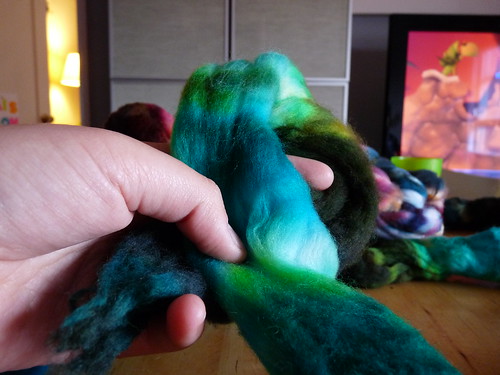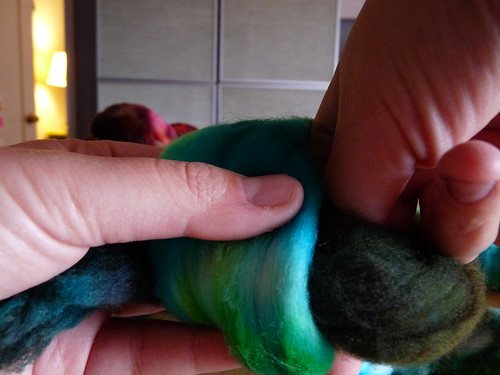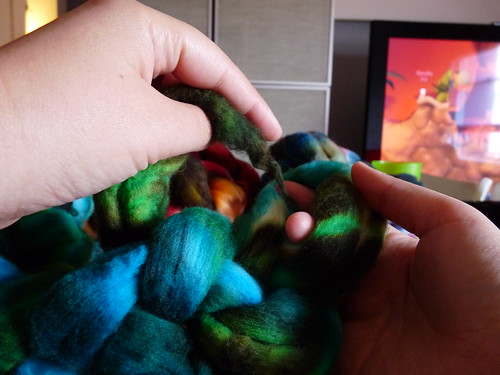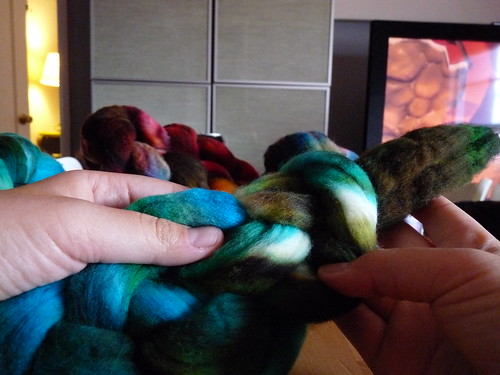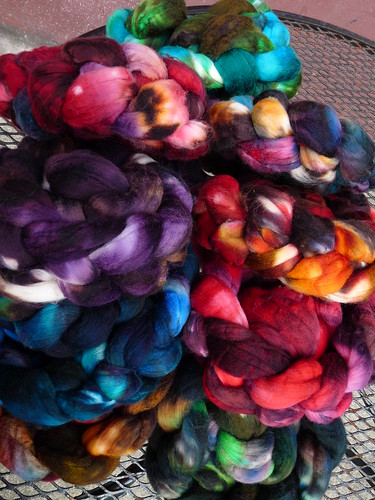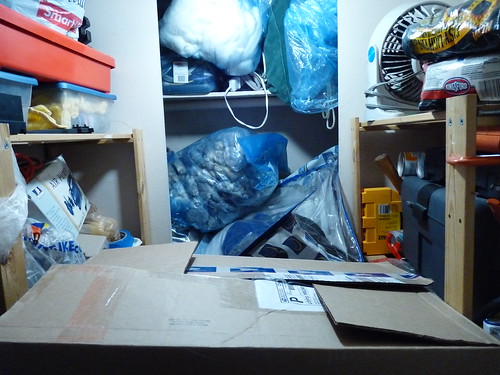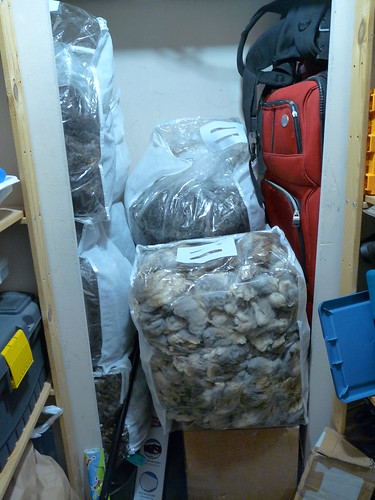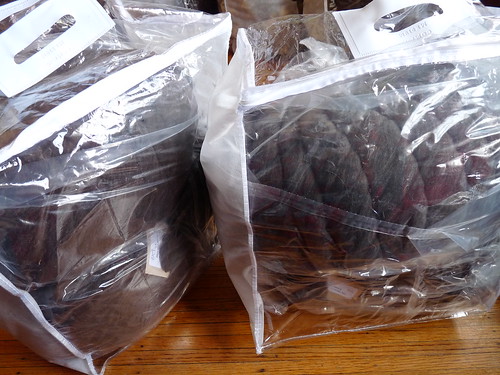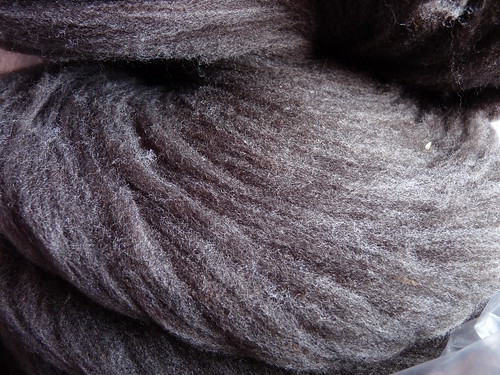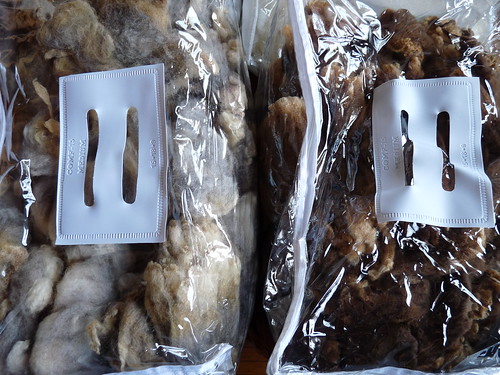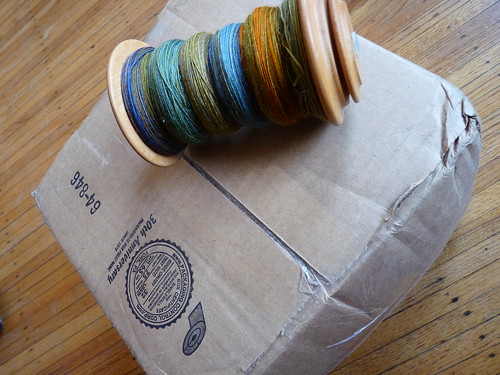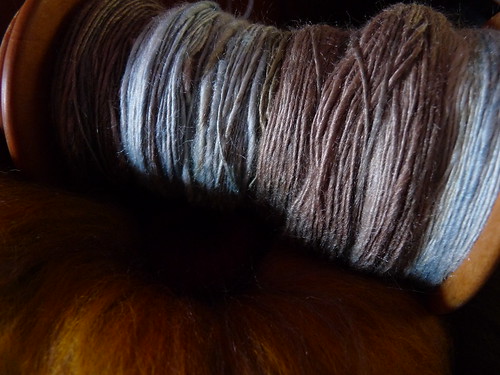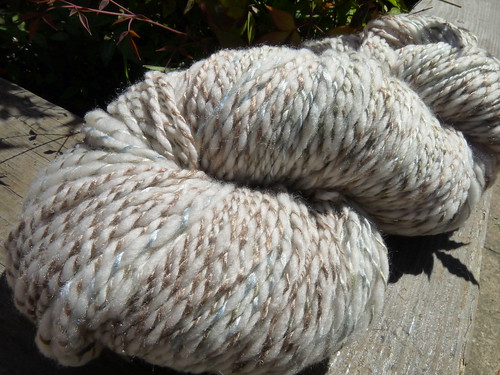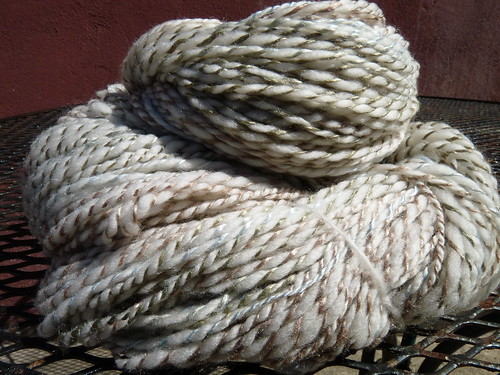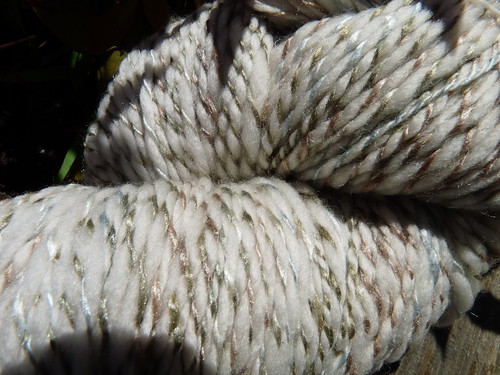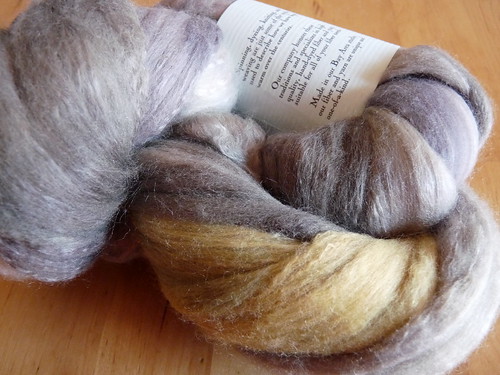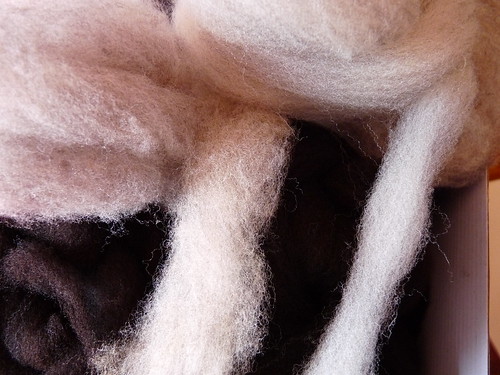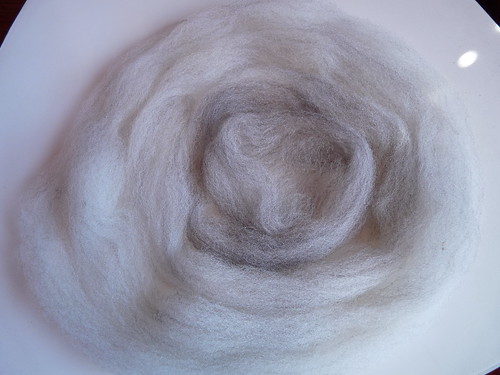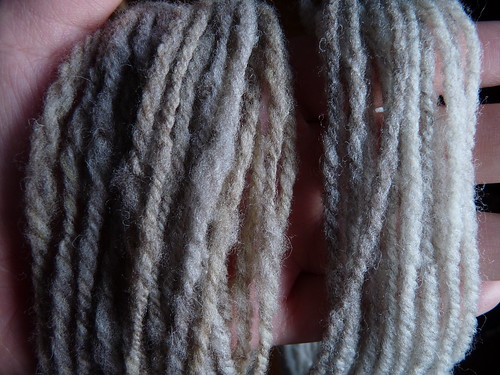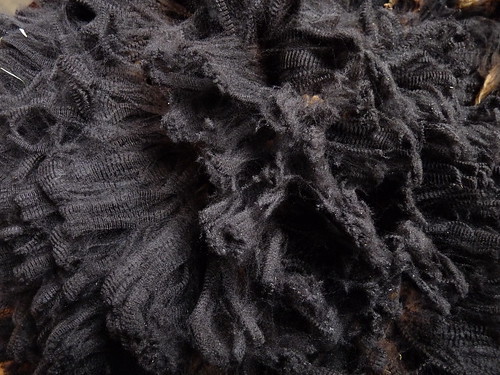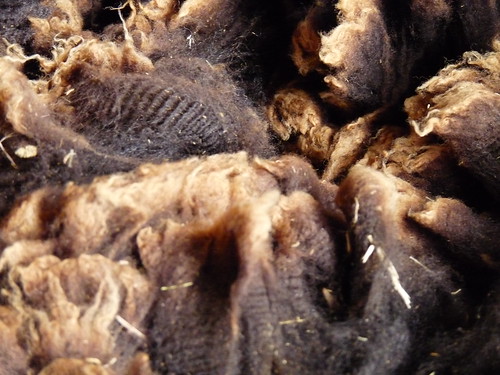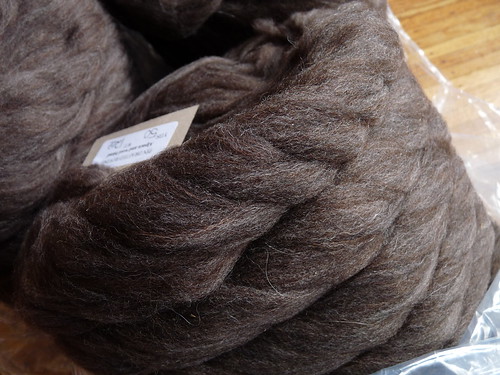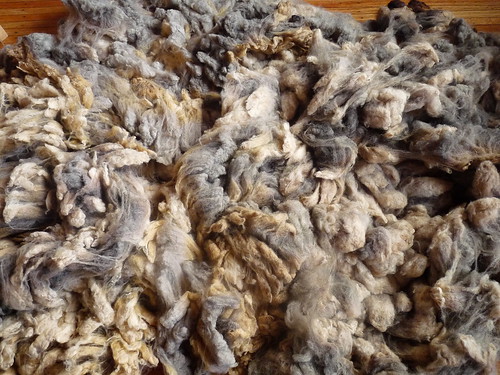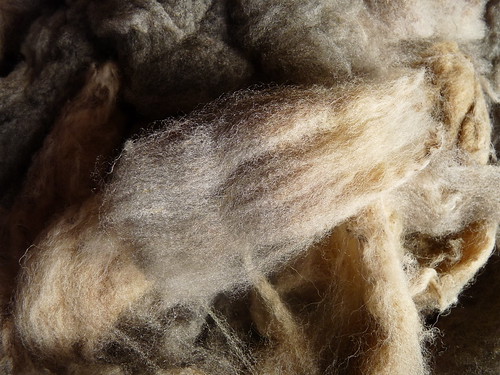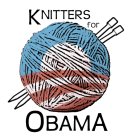Lots of pics and words today, sorry! Cutting this post into two parts-- check back for carding and combing differences with the washed Romeldale later today.
So!
There's a lot of raw fleece around these parts, and I get this little nervous feeling thinking about it. I don't like the idea of unwashed wool calling m@ths, lanolin hardening into crackly bits, all the spinner nightmares :) Coincidentally,
Kookaburra Co. has been dipping into the
social media fray and found my blog after a (positive) comment I made about their
Wash product... I offered to test out their
Scour fleece wash if they wanted to send me a sample and here we are :)
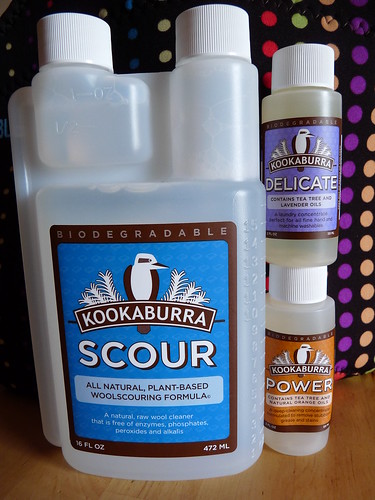 Kookaburra Scour
Kookaburra Scour (and sample sizes of their Delicate and Power washes)
"A natural, raw wool cleaner that is free of enzymes, phosphates, peroxides and alkalis"
As with the Unicorn Power Scour, I didn't pay for the product but was upfront that I would only review it fairly and honestly--
Kookaburra was adamant that I do so. Just wanted to be upfront about all those grains of salt :)
I had already decided to take
the lovely Romeldale from
Peeper Hollow Farm ("Hartley") and wash it in large pieces rather than
by lock formation when the
Kookaburra WoolScour arrived. For "in pieces" washing, I lay out the fleece, keeping it as intact as possible and separate large sections out, keeping those intact as well. They look like fleecy rectangles if it works out :)
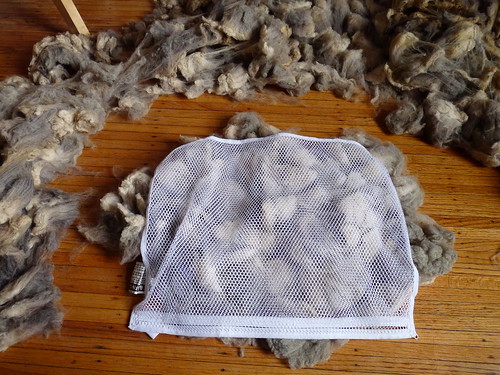
I use my mesh laundry bags as a guide-- I try and separate a piece that is larger than the bag on all sides, so when it's squished in there and wet in the wash, it doesn't float apart or lose how intact it is. Being very careful when loading and washing means that the formation will still be there to separate locks from it I wanted to comb/flick card it later.
It is also very fast loading bags like this, especially with fleeces that want to stay together like the Romeldale does... I had these loaded in less than half an hour!
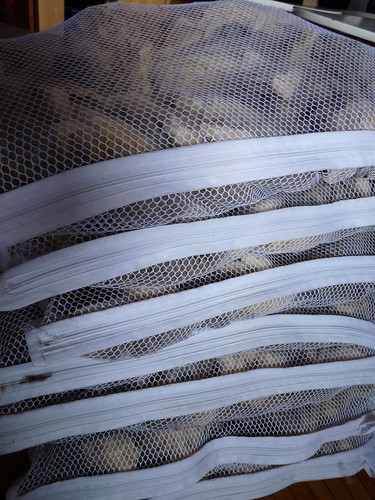
I put half of the bags to wash with the ultra concentrated blue Dawn--
same method as before (adding extra hot water, timing, etc.) except with 2 washes and 3 rinses. The Romeldale wasn't greasy greasy like the Cormo, but it was definitely more barnyard smelling :)
After the Dawn-washed fleece was dry, I set out to wash the remaining half of the fleece in
Kookaburra Woolscour. Kookaburra's instructions are simple-- use 1-2 ounces of Scour per pound of raw fiber.
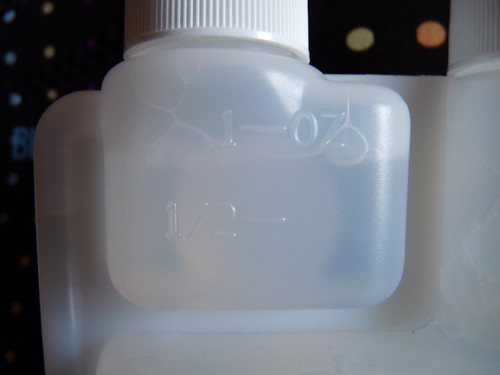 Kookaburra's
Kookaburra's excellent measuring tool built into their bottle
(their entire lineup comes in this handy packaging)
It was almost a little too simple for me :) since I feel most comfortable with my Dawn washing (several washes, several rinses)... and I didn't quite know how I could fit it into my washing routine. I had about 2 pounds of raw fleece left to wash, so I decided to use 1.5 oz of Kookaburra Scour total: an ounce for the first wash, a half ounce for the second, and two rinses.
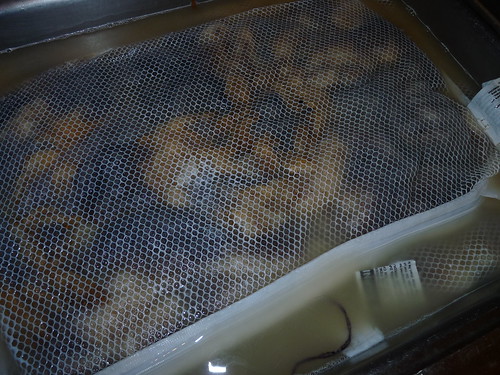
first wash-- see the yellow water? lanolin!
I also decided to keep using an extra stockpot of nearon boiling water added to the sink for each Kookaburra washing-- I know from last time my tap gets to be about 135deg on its own, and I always use extra hot water with the Dawn and am happy with the result. I only used two plain water rinses instead of 3 I used for the Dawn--
Kookaburra says that rinsing is optional, but because I think the extra hot water of rinses helps melt any residual grease, I kept with it. Honestly I think even one rinse would have been adequate, the second had almost no lanolin clouding come off of the fleece at all, just clear water.
I did notice, after the first wash in Scour, that after draining
my sink had a discernable bathtubish ring. I've never had that happen to me but it was neat-- felt like a very soft wax, wiped off easily. I'm guessing that it was some of the lanolin carried off and away from the fibers by the
Kookaburra Scour-- really interesting! It didn't happen after the first wash, either.
The million dollar question-- how did it work?
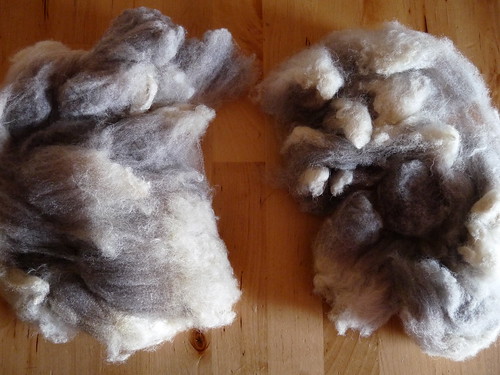
Kookaburra Scour washed fleece on left, blue Dawn washed fleece on right
Perfectly! :)
My bar for how a wool scour works is how it compares to blue Dawn (that always gets all the lanolin out, and leave soft ready-to-prep fiber behind)-- and I can't tell the difference in cleanliness of fleece. I can tell you I used much more Dawn liquid by weight than I did the Kookaburra,
like I said before I get the water bluish with Dawn (several ounces per wash) and used only 1.5oz of Kookaburra total for the same amount of fiber. I realized writing this I should have probably used at least 2 (an ounce for each pound of fleece), but I can't tell the difference :)
Going very carefully over the Kookaburra-washed fleece I did find one patch of locks that was slightly... draggy feeling,
same as with some of the Unicorn when I did the same blind feel test. I am never so careful when going over dawn-washed fleece though-- I'm beginning to think there are a few locks that either don't get rinsed out totally or product is left behind when using any of them, probably including Dawn. It isn't enough to warrant rewashing, just a slight... drag and definitely not a dealbreaker (just honest).
I do appreciate that Kookaburra's packaging states I can use much less water than I'm used to-- now that I've seen Kookaburra work well under my normal washing methods (several washes, several rinses), I will need to try theirs (washing once with all the scour required and not rinsing). That'll be an interesting test for another day, and honestly I'm more scared of that one (not rinsing! don't know if i can handle it!), but I'll keep you posted :)
Kookaburra Scour's scent is really appealing-- I have no idea what it is ("all natural, plant-based") but it smells familiar and very clean. Since I rinse the fleece, no scent is left behind-- which is actually a plus because this Romeldale was so sheepy smelling and doesn't smell like ANYTHING anymore!
Would I use it again? Definitely. I really do appreciate the concentrated aspect of
Kookaburra Scour since I can use much less product weightwise (and throw away fewer packages) compared to the Dawn. I know that I can use less water rinsing the woolscour out than with Dawn; I have to use SO much Dawn that it takes many plain water rinses to let the soap out of the fleece, and avoiding that is a good thing. Kookaburra Scour is also economical in actual product cost-- I used 1.5 oz for 2 pounds of fleece; the 16 oz bottle retails for $10.95 so it cost a whopping $1.03 to wash the 2 pounds clean. (If I used 2 ounces like I should have according to the package, it would have cost $1.37.) I didn't weigh the blue Dawn I used this time, but I'm 99% sure it was actually cheaper to use the Kookaburra as compares to the Dawn-- which I find mindblowing for a specialized fiber product.
Another plus is that Kookaburra is already
widely distributed in local yarn/specialty stores (
my favorite bay area yarnstore, Article Pract, carries
Kookaburra Wash), so I'd guess that you could ask your LYS to order it for you and support them with your purchases at the same time. If you don't have an awesome LYS like I do, you can purchase the scour direct from
Kookaburra Co.
Kookaburra Wash has been my favorite woolwash for a long time, and I'm excited to have found another excellent specialty fleecewash from them I can continue to use and enjoy.
